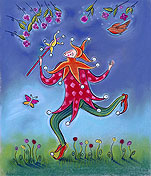

Books about Shintoism
Shinto or kami-no-michi is the natural spirituality of Japan and the Japanese people. The word Shinto ("Way of the Gods") was adopted from the written Chinese, combining two kanji: "shin", meaning gods or spirits (originally from the Chinese word shen); and "tō", or "do" meaning a philosophical path or study (originally from the Chinese word tao).
Shinto incorporates spiritual practices derived from many local and regional prehistoric traditions, but did not emerge as a formal centralized religious institution until the arrival of Buddhism, Confucianism, and Daoism, beginning in the 6th century. Buddhism gradually adapted in Japan to the native spiruality, including, for example, counting kami from the Shinto belief among the bodhisattvas (bosatsu).
Shinto practices were first recorded and codified in the written historical records of the Kojiki and Nihon Shoki in the 7th and 8th century. Still, these earliest Japanese writings do not refer to a unified "Shinto religion", but practices associated with harvests and other seasonal clan events, along with a uniquely Japanese cosmogony and mythology, combining spiritual traditions of the ascendant clans of early Japan, mainly the Yamato and Izumo cultures. More »
